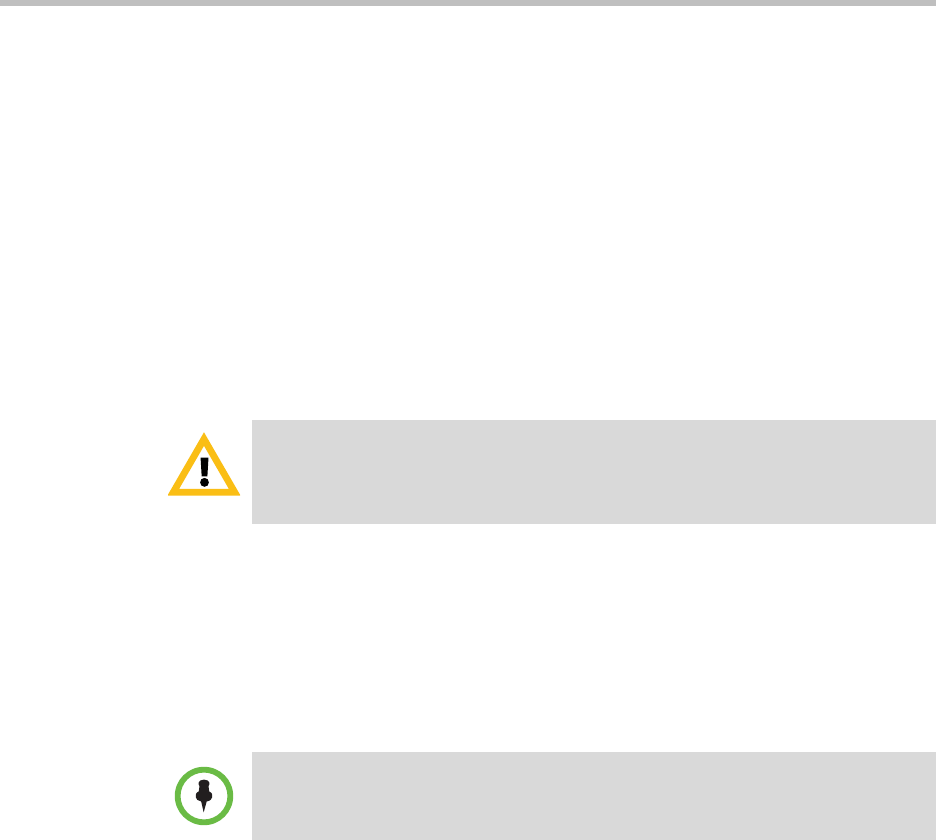
Upgrading Polycom CX700 Phone within a Microsoft Office Communications Server 2007 R2 Environment
17
How Polycom CX700 Phones Connect to the Device Update Service
At a high level, a Polycom CX700 phone using the default configuration
connects to the Microsoft Office Communications Server (OCS) 2007 R2 Device
Update Service in the following way:
1. When a user signs in to an OCPE device, the device contacts the server or
pool hosting the corresponding user account to obtain in-band
provisioning information that includes the internal and external URL of
the IIS server running the Device Update Service.
If the device is turned on, but no user signs on, and no user has ever
previously signed on to the device (or a hard reset is performed) AND it's
running either version 1.0.522.101 or 3.5.6907.35; the device sends a DNS
lookup request to ucupdates-r2.<DHCPDomain> to obtain the FQDN of
the pool server running Device Update Service.
Thereafter, when the phone is turned on or every 24 hours by default, the
phone queries DNS for ucupdates-r2.<DHCPDomain> and sends an
HTTP POST request over port 80 to the IP Address returned. The request
(for example, http://192.168.7.81/RequestHandler/ucdevice.upx) is sent
to the Web Components Server hosting the Device Update Service and
includes the MAC address and serial number of the phone issuing the
request.
1. The Microsoft Office Communications Server (OCS) 2007 R2 Device
Update Service returns a response containing one of the following:
• If no updates exists for the current version, the response contains
downloads=0. For test devices, updates must be “Pending” rather than
“Approved” for this to occur.
• If an approved update exists for the current version, the response contains
an internal and external URL for Device Update Service. For test devices,
updates must be “Pending” rather than “Approved” for this to occur.
In the latter case, the phone sends an HTTP update request over port 80 to
the Device Update Service unless the device is remote; in that case HTTPS
over port 443 is used.
Software release 1.0.199.123 does not check for a DNS A record called
“ucupdates.<DHCPDomain>”. The check was disabled for this particular software
release so the only option for obtaining the FQDN of the Device Update service is
via in-band provisioning; which only occurs by signing in to the phone.
If you sign in to the phone, this will be a DNS query for an A record called
ucupdates-r2.<DHCPDomain> which returns the pool IP address.
